"Presentation of the Blessed Virgin" Church
The original Renaisance Church is located in the "Varosha" neighbourhood in Blagoevgrad - a place preserved its authenticity.
Fertility and warm mineral springs
During its millennial history it has gone through many events and names. It was founded by the Thracians before the new age – they were drawn by the fertility and the warm mineral springs. Each ruler and each historical age has left an imprint not only on its development but also on its name. There are numerous names related to it – Pautalia, Ulpia Pautalia, Pautalia Avrelii, Velevuzdion, Velbondzh, Velbuzhd, Konstantinova Bania, Uludzha, Bania, Kolasia, Kyustendil.
The Thracian settlement was turned into an important fortress and medical resort by the Romans. They called it Pautalia. During the reign of Emperor Marc Ulpius Trajan, in 106, Kyustendil was declared a city. A healing centre – asclepeion – was built whose remains we can see even today in the centre of the town. In it there are halls for treatment, rest and gymnastics as well as pools with warm mineral water. The town’s emblematic fortress of Hisarlaka was built in 5th century because of the frequent attacks of barbarian tribes. It is located in the eponymous locality above Kyustendil and was used up to 15th century. Later the town received the name Velbadzh. During the Byzantine yoke, big monastery complexes were built around it. The town fell under Ottoman rule at the end of 14th century. It was then when it got the name Konstantin-ill (Constantine’s land) after the name of its last Christian ruler. During the Revival Kyustendil developed fast. A church and a school were built. Hajduk bands roamed the nearby mountains led by Rumena voivode, one of the few women voivodes, and Ilyo voivode.
Today, the centre of the town, under which is the antique town of Pautalia, is home to the Pautalia – Velbadzh Architectural and Archaeological Reserve. Near it is Pautalia’s asclepeion, which span over an area of 3000 square metres in the antiquity, with its centrally-heated spaces, drainage pipes and others. Hisarlaka Fortress – an architectural-construction monument of culture of national importance – can be seen on top of the hill over the town. Here quite a few museums and historical monuments of prominent local people are open for visiting – the Ilyo Voivode House-Museum, the Emfiedzhieva Kashta House-Museum, the Vladimir Dimitrov-the Master Art Gallery and others.
Osogovo Mountain (Osogovska Planina) rises over Kyustendil. Its foot is both in Bulgaria, where it’s the fifth highest mountain, and in Macedonia. Its highest peak is Ruen – 2251 metres of altitude. The mountain offers opportunities for hiking and ski tourism. It is the source of quite a few rivers – Bistritsa, Eleshnitsa, Dragovishtitsa and Treklyanska. The first two “are born” right under Ruen Peak. The Tsarna Reka Nature Reserve is also in Osogovo. Among the region’s sights are ‘Yuch bunar’ – a group of trees of the giant sequoia species near the village of Bogoslov, the Centurial beech forest and the St. Lukas Monastery near the village of Granitsa and many others.
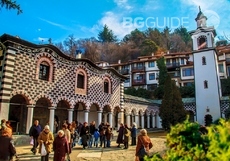
The original Renaisance Church is located in the "Varosha" neighbourhood in Blagoevgrad - a place preserved its authenticity.
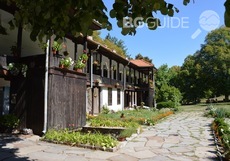
The Zemen Monastery is situated along the Struma River, among the beautiful landscapes of Konyavska Mountain, less than two km. away from the town of Zemen.
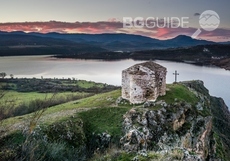
The St. Yoan Letni Chapel is located in a captivating place in the beautiful surroundings of the Pchelina Dam.
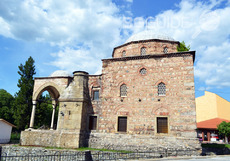
The former Ahmed Bey Mosque in Kyustendil is now the local museum’s exhibition hall.
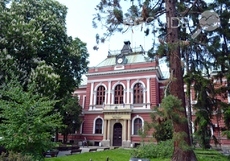
The Pedagogical School building adorns Kyustendil’s historical centre.

Една от най-красивите и величествени възрожденски църкви в България се намира в центъра на западния град Бобошево.
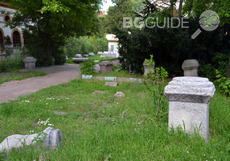
Една от гордостите на Кюстендил и символ на града са Римските терми.